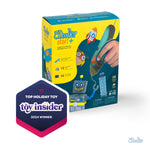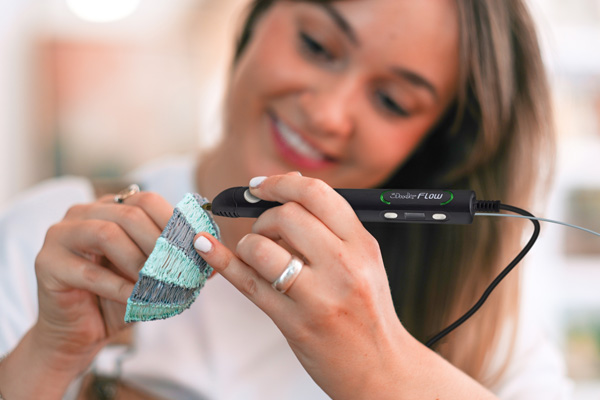When 3Doodler launched the first 3D pen to the market in 2013, the concept was to provide creatives and professionals a new avenue to bring ideas to life. 3Doodler 3D pens are ideal for freehand drawing, creating whimsical doodles, or making quick repairs. We’re taking 3D pen creativity in a new direction with logic, rules, and mathematical thinking with parametric design and algorithmic art!
What is Algorithmic Art?
You’ve likely seen this type of artwork and didn’t even realize you were looking at mathematical thinking in an art form! The approach uses a system of rules and parameters to generate complex and often intricate forms.
Parametric design uses variables you set, instead of directly drawing every line, and it’s often used in architecture and engineering to create optimal structures. In this process, changing one parameter could alter the entire design. For example, imagine a spiraling tower where simple numbers control the radius of each level and twists or turns!
Algorithmic art, on the other hand, uses a set of instructions to generate unique patterns and create artwork. Natural patterns, mathematical equations, or even abstract concepts can help inform the direction of a particular design. As you expand your thinking, you could create intricate branching structures or fascinating geometric patterns, all based on mathematical sequences.
Instead of complex software, using a 3D pen for this process enables tangible artistic creation that is accessible, unique, and allows for experimentation!
Getting Started: Simple Algorithmic 3D Pen Creations
Let’s get those creative juices flowing with a few quick and easy ways to get started. Get your 3Doodler 3D pen and plenty of colorful filament, and find a clean surface.
Geometric Progressions: Create art with sequences where each term is found by multiplying the previous term by a constant factor! You can use geometric progressionto create repeating patterns where the size or scale of the elements decreases or increases. For example, draw the circles with your 3D pen, making each one incrementally larger. Connect the shapes to form an expanding structure like a cone.
Fractals: These are geometric shapes that exhibit self-similarity, meaning they have the same pattern at different scales. For example, the Koch Snowflakeis a fractal curve created using an equilateral triangle, and each successive stage is formed by adding outward bends to each side of the previous stage, making smaller equilateral triangles.
Mathematical Sequence: There are many mathematical sequences that you can apply to art. The most commonly referenced is the Fibonacci Sequence, which is used to create a spiral by drawing squares with side lengths corresponding to the Fibonacci numbers.
More Tips for Success!
Combining the creative outlet of 3D drawing with the logical nature of parametric and algorithmic design allows you to explore new dimensions of artistic expression — the only limit is your imagination.
Remember to start with simple patterns and basic rules before you increase the complexity. Sketch your ideas with intention and map out how your design will progress. And, most importantly, don’t forget to embrace imperfection. The beauty of art lies in its organic nature, and creating with a 3D pen is no different. Remember that slight variations in your design add character and interest.



